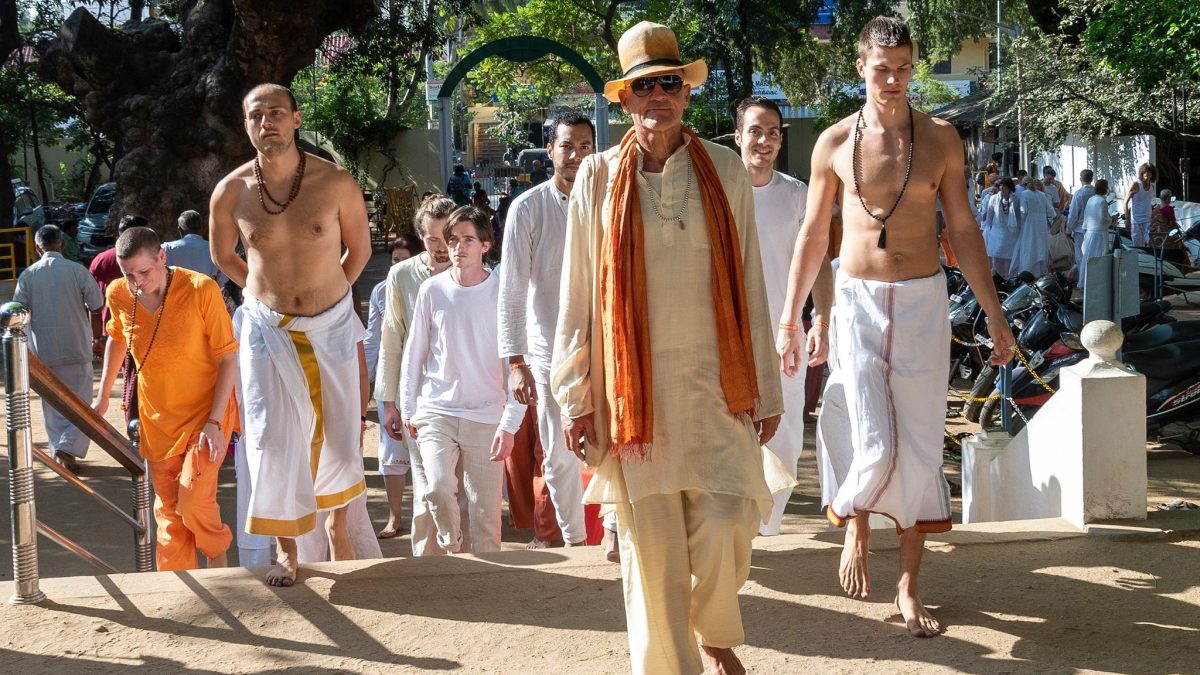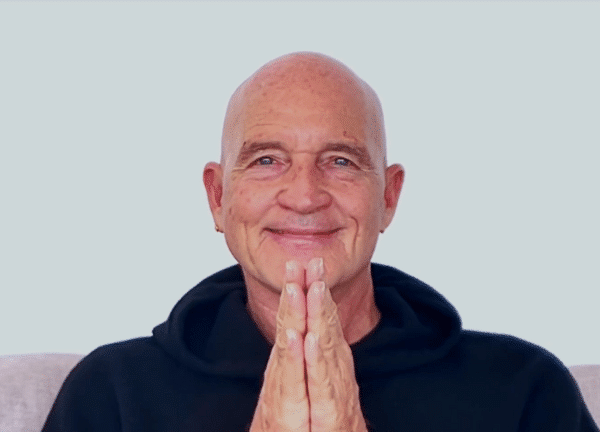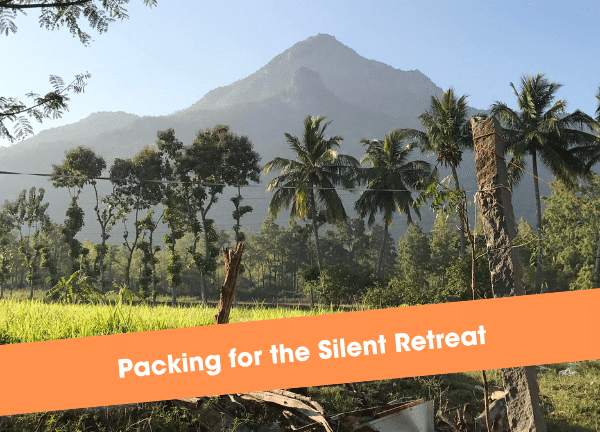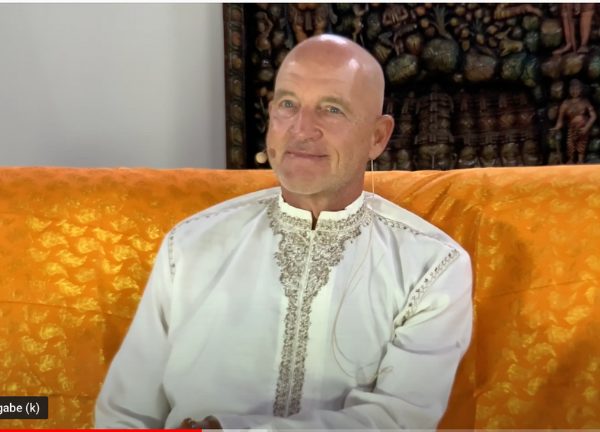
What is your motivation to be in a 3-week silent retreat in India?
October 2, 2022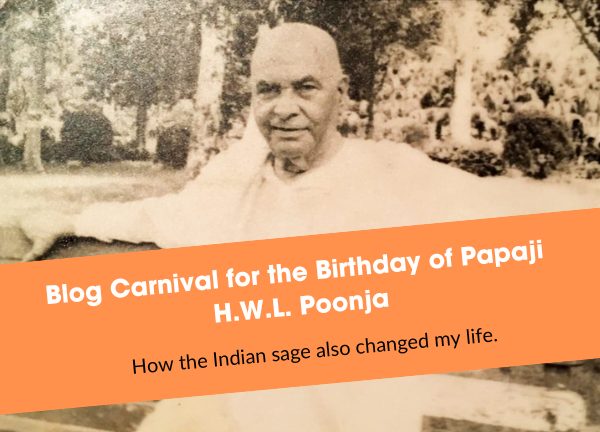
Blog Carnival for the Birthday of Papaji H.W.L. Poonja
October 5, 2022
Pilgrimage is modern. Have you ever asked yourself: What is a Pradakshina? The term comes from Sanskrit and it refers to a circumambulation of the sacred mountain Arunachala in Tiruvannamalai. Read about what it’s all about here. You’ll probably come across this term again and again as you browse this website or Madhukar Enlighten Life’s YouTube channel, because a Pradakshina is part of the three-week silent retreat held once a year in southern India.
The Pradakshina is a pilgrimage
The sacred mountain of Arunachala is in India in the small town of Tiruvannamalai in the state of Tamil Nadu. It is said that people have been making pilgrimages here since the times of the Rigveda. The Rigvega is the oldest part of the Vedas – which means this is a very ancient pilgrimage site. Before I give you the answer to the question: What is a Pradakshina, I would like to take you to India first.
The pilgrimage town of Tiruvannamalai
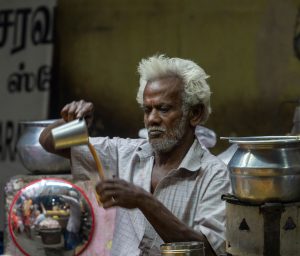
One of the chai stores in Tiruvannamalai
But let’s stay in the present. Let me take you to this bustling city in the south of India. Tiruvannamalai is home of mount Arunachala and Sri Ramanashram. The best way is to get into a rickshaw. We sit on the back seat of a small motorized vehicle. The driver has already asked us where to go. “Take us to Ramana Ashram”. We negotiate the price and off we go. Although it is warm in January or February, we are both glad to have a scarf on. In case there are smells that are unpleasant, we can pull it over our noses. And the driving wind is not to be underestimated either. We pass trucks, cars, many other rickshaws, bicycles, bullock carts, and many, many people on foot.
Some are carrying something on their heads, they are on their way to the market. Others are walking in rapture or at least with a clear orientation of their way. These are already the pilgrims – most of the time you can recognize them. The pilgrim’s path goes a bit through the middle of the city. The city is bustling. We pass the big temple, many stores, restaurants, chaishops and a cinema. The rules on the street are different than in Europe. It always seems to me that someone dictates where the traffic goes – and then it’s just a matter of flowing along. I then also imagine that the Indians live devotionally on the street as well. They are no longer an individual, but simply flow along with the flow of traffic.
The mountain Arunachala – Guru of Sri Ramana Maharshi
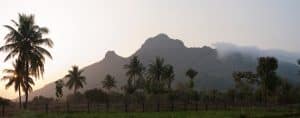
What is a pradakshina?
And now I’m finally getting around to explaining the pradakshina to you. The pilgrimage is not just going to Tiru and being there. Once you’re there, it’s about going around the mountain, going around the guru, going around the divine. It’s about circambulating Arunachala. So far we are still traveling with the riksha. Now we have arrived at Ramana Ashram and we are getting off. Now we are traveling on foot. There is an inner and an outer path for circambulating the mountain. The outer path is about 14 km long and consists mostly of a paved road. When we go on pilgrimage, we go on foot and traditionally even barefoot.
More about the Pradakshina
The circumambulation of Arunachala is called Pradakshina or Parikrama in Sanskrit. In Tamil, the circumambulation is called Girivalam and is one of the most important ways to worship Shiva. It is both sadhana (practice) and seva (service). I realize just in writing that my explanation of pradakshina keeps raising more questions, there are still more words in Sanskrit. Yes, I’ll explain all of them. I now write also a Sanskrit glossary for that. Since the mountain is equal to the guru, he is Sat – Truth and so the circumambulation is Satsang. Looking at the mountain is darshan from the divine. There are also a few rules: The circumambulation is always clockwise. Traditionally we go barefoot and of course we are aware that we are circumambulating the Divine. Before we start, we take some of the sacred earth from the road with our right hand and put it on our forehead, on the forehead chakra. What that means, I don’t know. I just used to imitate it, Madhukar showed it to us like this. We keep silent on the way or chant a mantra dedicated to Shiva respectively Arunachala. “Arunachala, Shiva” is the chanting and you call the powers of the unmanifested Shiva by chanting. Even Sri Ramana Maharshi was circling in a pradakshina around the holy mountain – once every day. He considered the mountain his Guruji.
Then let’s go – we start at Ramana Maharshi Ashram!
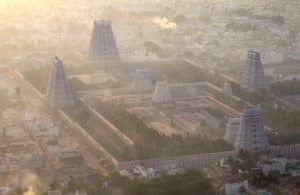
Temple in Tiruvannamalai
From the Ramana Maharshi Ashram, we now start walking. We start our 14 km walk and go clockwise. On certain days we don’t even need any orientation for this – we find our way simply by diving into the crowd. This is for example the case at full moon – or at Sivaratri (new moon). On these occasions there are many more pilgrims in the city and thus on Girivallam road. On Sivaratri you should even have a room already reserved – otherwise you won’t get a place to sleep.
The city is crowded. We walk our way in the shade of the big Algharoba trees. To our right and left, vendors sell water, chai, lemonade, food and other stuff. There are stalls playing music and selling CDs – sacred chants. People are taking a break, sitting on a bench, their eyes fixed on Arunachala. A festive atmosphere is all around.
The mountain changes shape – it has different faces as we walk around it. From one point, it even looks like a reclining Buddha. Have you ever seen that before? At some point we leave the city and already the other end of Tiru is waiting for us again. We walk along the street lined with stores and restaurants. Finally we reach the center of the city – we are in front of the big temple. From here we walk past the marketplace a bit along a side street – to escape the traffic on the main street. It is not far when we rejoin the main street there – then we are already back where we started our Pradakshina – at the Ramana Ashram. There we go through the gate, leave our shoes next to the entrance – there is a special place for that (you won’t miss it, because there are the shoes of everyone who enters the ashram).
Arunachala Siva
Then we go inside and sit there in silence for a while. This completes the Pradakshina wonderfully. If you have never experienced such a pilgrimage, never done a Pradakshina – I may give you something to take with you. You can also join into the mantra chanting: “Arunachala Shiva, Arunachala Siva, Arunachala Siva, Arunachala.” Please pay attention to what this circumambulation does to you. How do you feel after your circumambulation? How do you feel when you sit in silence in the ashram later? I have written here how it is done, but what is more important is what happens. And that is another story. You have to find out yourself.
Do you have a wish – now is your opportunity!
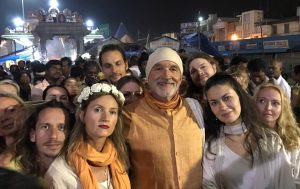
Pradakshina on fullmoon
Ahja, one thing I almost forgot. Many people go around the mountain because they have a wish. If you make a wish at the Pradakshina, it is said that it will come true. That’s what Madhukar was referring to in this video as well. Madhukar speaks English and you can also read here what he said then. So remember the Pradakshina – and choose wisely what you wish for.
On the way we meet again and again people who have a cloth bag around their neck. It bears the inscription, “O Arunachala, you root out the ego of those who think of you in the heart as “Arunachala”‘.” This is one of the verses from a poem of Ramana Maharshi and this verse adorns the bag in which you can put the books that you can buy in the bookstore that belongs to Ramana Ashram.
General meaning of Pradakshina
Generally, in Hinduism and Buddhism, Pradakshina means walking around something that is sacred. Just as you walk around Arunachala in Tiruvannamalai, you can walk around an entire city. Or you walk around a shrine or around the guru. Varanasi, for example, is a popular place to walk around, which is a march of 58 km. Some also walk from the source of the Ganges to its mouth and back – which takes several years. A pradakshina must be done on foot – it cannot be done in a car or vehicle.
Would you like to experience a Pradakshina?
If you feel like experiencing a Pradakshina now, come to the three-week silent retreat held at Tiru. The last two years, 2021 and 2022, the Tiru retreat, the silent retreat, was held online and did not last three weeks. In 2023 luckily it was possible and in 2024 you can be there again – three weeks at the foot of Arunachala in silence. And we’ll certainly do at least one Pradakshina there again during the retreat. And that is a completely different experience. See here for more information about it (click).
Update February 2023: The inner path is not possible to walk in the moment.

